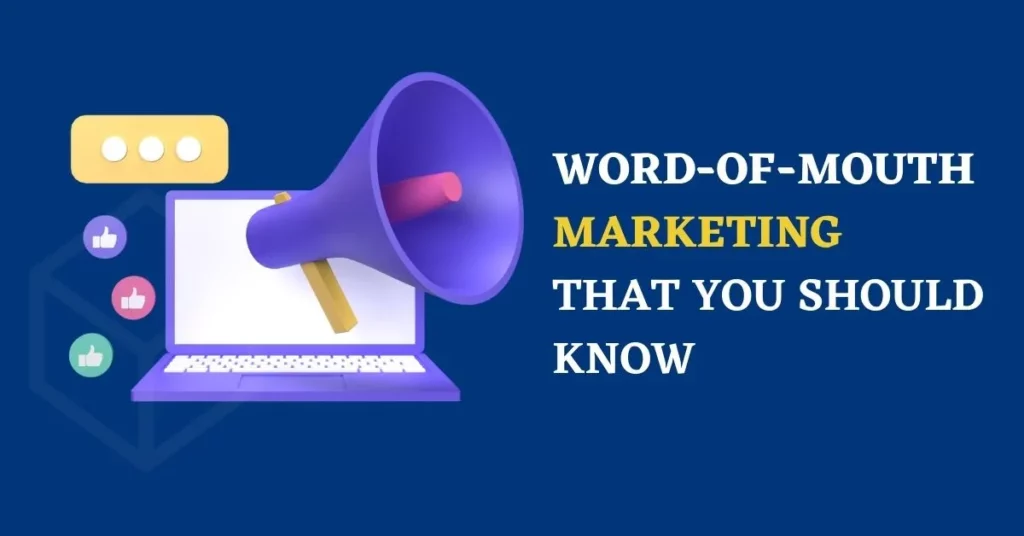
Companies are always looking for new and creative ways to sell their goods and services in the competitive business environment of today.
Indeed, while traditional advertising strategies are still effective, numerous companies are now counting on word-of-mouth advertising since it can cultivate consumer attachment, credibility, and trust.
Word-of-mouth advertising uses sincere recommendations and experiences of happy consumers to start a chain reaction of effective brand creation.
This article will educate you on all you need to know about word-of-mouth marketing.
What is word-of-mouth marketing?
Word-of-mouth marketing is a powerful promotion method that uses real people’s honest opinions and suggestions about a product, service, or brand.
Based on personal experiences and trust, this natural marketing is more effective than traditional advertising.
These genuine recommendations have a stronger impact, and as customers share their good experiences, word-of-mouth marketing reaches more people.
This strategy highlights the importance of human connections and trust, allowing businesses to create lasting impressions, build loyalty, and boost growth with happy customer endorsements.
Difference between Word-of-Mouth Marketing and Traditional Marketing
| Aspect | Word-of-Mouth Marketing | Traditional Marketing |
| Definition | Organic promotion relying on satisfied customers sharing experiences and recommendations. | Established methods of promotion and advertising, such as print, radio, and television ads. |
| Mode of Communication | Personal conversations, social media, online reviews, and testimonials. | Mass media channels like newspapers, magazines, radio, television, and billboards. |
| Target Audience | Specific individuals or groups, leveraging personal connections to foster trust. | The broader audience casts a wide net to attract potential customers. |
| Cost and ROI | Typically more cost-effective with higher ROI due to the power of personal recommendations. | Can be expensive with varying ROI, depending on the effectiveness of the ad campaign. |
| Level of Trust | Higher trust, as recommendations come from friends, family, or acquaintances. | Lower trust, as messages are from the company and may be perceived as biased. |
| Engagement | Encourages two-way communication and interaction between customers and brands. | Often one-way communication, with limited customer interaction. |
| Measuring Effectiveness | Net Promoter Score (NPS), Customer Lifetime Value (CLV), social media analytics, sentiment analysis. | Traditional metrics like impressions, reach, and conversion rates. |
| Flexibility and Adaptation | More adaptable to changes in market trends, customer preferences, and social media platforms. | Slower to adapt to new trends, may require significant resources to modify campaigns. |
Importance and benefits of word-of-mouth marketing
Word-of-mouth marketing is crucial in today’s business world as it influences consumer choices.
This marketing method uses personal recommendations, which affect potential customers more than traditional ads.
Here are important reasons why word-of-mouth marketing matters for businesses:
Building trust:
People tend to trust the opinions and experiences of friends, family, and acquaintances more than ads.
This makes word-of-mouth marketing a dependable and persuasive way to promote products and services.
Cost-effective:
While there might be some costs for promoting word-of-mouth marketing, like referral programs or social media campaigns, these expenses are usually less than traditional advertising costs.
Broader reach:
Positive word-of-mouth marketing can quickly spread through social networks, significantly increasing its reach and effectiveness with little extra effort or investment from the company.
Better customer loyalty:
Customers who recommend a brand due to positive experiences are more likely to keep supporting that business, leading to lasting loyalty and repeat customers.
Organic growth:
word-of-mouth marketing can help a company grow naturally as satisfied customers attract new ones who also share their positive experiences, creating a cycle of growth and brand awareness.
Types of word-of-mouth marketing
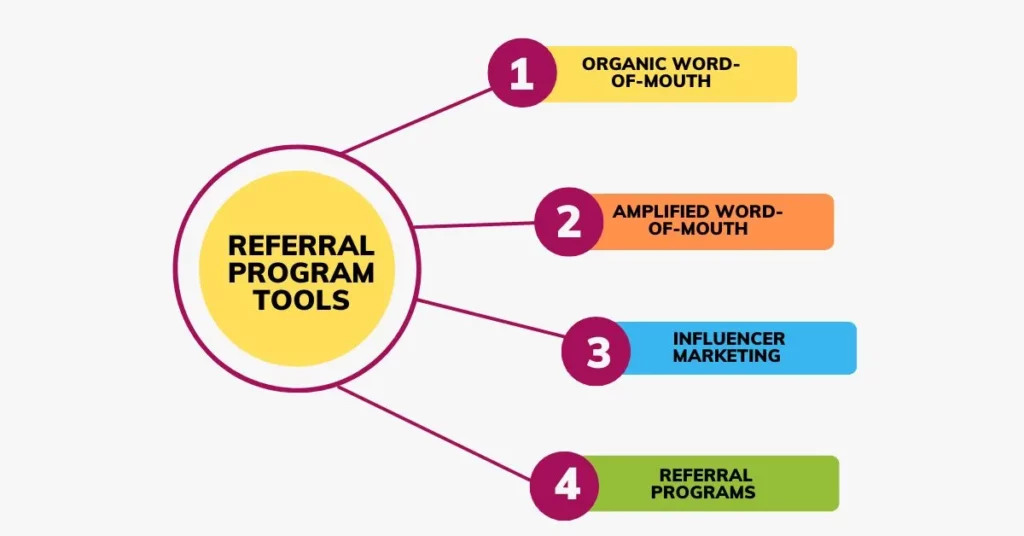
Organic word-of-mouth:
Organic Word-of- Mouth happens naturally when clients share their experiences and opinions about a product or service with others.
This can be through exchanges with familiars, family, or associates and can be both positive and negative.
Example:
A customer has a great experience with a restaurant and recommends it to their friends, who also visit the restaurant based on that recommendation.
Amplified word-of-mouth:
Amplified Word-of- Mouth is when businesses industriously encourage customers to share their experiences and opinions about a product or service through social media or other channels.
This can be done through the use of hashtags, user-generated content, and other styles.
Example:
A clothing company launches a social media movement encouraging clients to share photographs of themselves wearing their products using a specific hashtag.
Influencer Marketing:
Influencer marketing is when businesses partner with individuals who have a large following on social media to promote their products or services.
These individuals can be celebrities, social media personalities, or industriousness experts.
Example:
Fitness brand partners with well-known fitness influencers to promote their products on social media.
Referral Programs:
Referral programs give customers the benefit of telling their friends about a business. This can be done with benefits like discounts or special deals for both the person who sent it and the person who received
Example:
An online retailer offers a discount to customers who refer their friends to purchase on the website.
Strategies for Encouraging Word-of-Mouth Marketing
Strategies for encouraging word-of-mouth marketing are essential for businesses seeking to harness the power of particular recommendations to promote their products or services.
Then there are some effective strategies for encouraging word-of-mouth marketing.
- Provide an exceptional customer experience.
- Encourage user-generated content.
- Create shareable content.
- Leverage social media.
Provide an exceptional customer experience:
Delivering an exceptional client experience is the foundation of successful word-of-mouth marketing.
Clients who have a positive experience are more likely to recommend the brand to others.
This can be achieved by delivering exceptional client service, resolving issues instantly, and enhancing the client experience.
Example:
Zappos, an online shoe retailer, is known for its exceptional client service. The company offers free shipping and a 365-day return policy, making it easy for customers to shop with confidence.
As a result, Zappos has built a dedicated client base and strong word-of-mouth marketing.
Encourage user-generated content:
Encouraging guests to produce and partake in user-generated content can be an effective strategy for word-of-mouth marketing.
User-generated content can be in the form of reviews, witnesses, or social media posts, and it provides social evidence that can impact implicit clients.
Example:
GoPro, a manufacturer of action cameras, encourages its guests to share their adventure videos on social media using the hashtag #GoPro.
This strategy has led to a vast quantity of user-generated content and has helped the brand build a strong community through word-of-mouth marketing.
Create shareable content:
Creating shareable content can help amplify word-of-mouth marketing. Shareable content can be in the form of blog posts, infographics, videos, or social media posts that are instructional, amusing, or inspirational.
Example:
Dollar Shave Club, a subscription-based razor company, created a humorous videotape that went viral and helped launch the brand.
The videotape has over 27 million views on YouTube and is a classic case of successful shareable content.
Leverage social media:
Social media platforms are an ideal channel for word-of-mouth marketing. Using social media can help to amplify the reach of positive recommendations and produce a community of brand lawyers.
Example:
Starbucks, the coffee chain, has a strong social media presence and laboriously engages with its clients.
The company encourages clients to share their prints using the hashtag #Starbucks, which has helped to produce a community of brand lawyers and word-of-mouth marketing.
How to Build a Word-of-Mouth Marketing Strategy?
Discover the power of word-of-mouth marketing as a vital tool for driving business growth and increasing brand awareness.
Follow these essential steps to create an effective strategy that engages and retains customers while fostering organic promotion.
Prioritize customer satisfaction by:
- Ensure a high-quality product or service.
- provide exceptional customer service.
- Address customer concerns proactively.
Fostering Customer Engagement by:
- Connect with customers on social media.
- Share valuable and engaging content.
- Organize events and interactive sessions.
Implement referral programs by:
- Offer incentives for referrals.
- Simplify the referral process.
- Promote the referral program through various channels.
Collaborate with influencers and brand ambassadors by:
- Identify industry influencers.
- Encourage loyal customers to promote your brand.
- Support influencers and ambassadors with exclusive offers.
Showcase customer testimonials by:
- Collect customer reviews and feedback.
- Display testimonials on your website and social media.
- Respond to customer reviews to demonstrate commitment.
Monitor and measure results by:
- Track the effectiveness of your WOMM efforts.
- Analyze the results to identify areas for improvement.
- Continuously refine and optimize your WOMM strategies.
Types of Word-of-Mouth Marketing Tools
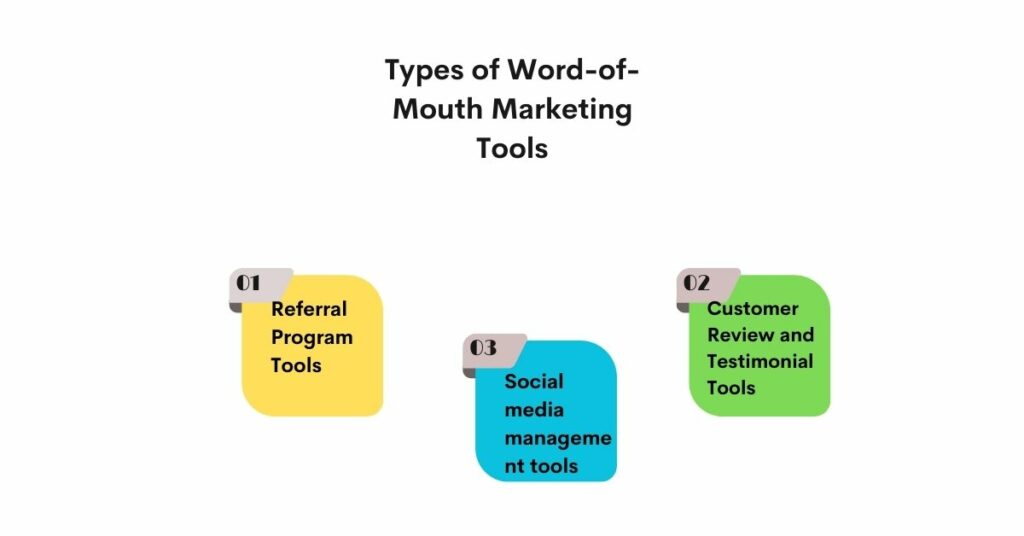
Referral Program Tools:
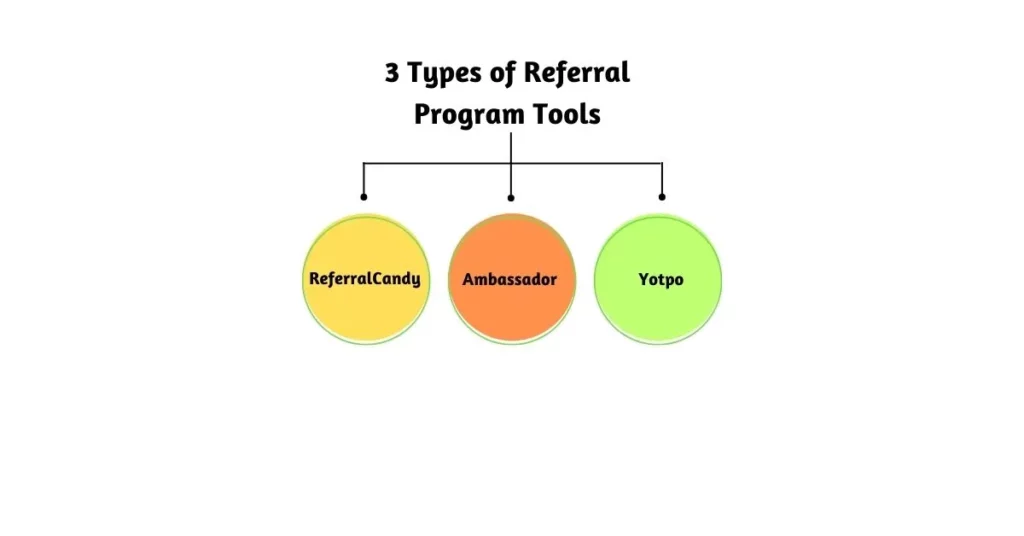
Tools like ReferralCandy, Ambassador, and Yotpo help companies set up and manage referral programs.
They make it easy for customers to recommend friends and family by giving them special referral codes or links.
When someone refers others, they get rewards like discounts, free items, or cash. These tools automate referrals, making it more likely for customers to share about a brand and boost word-of-mouth marketing.
Social media management tools:
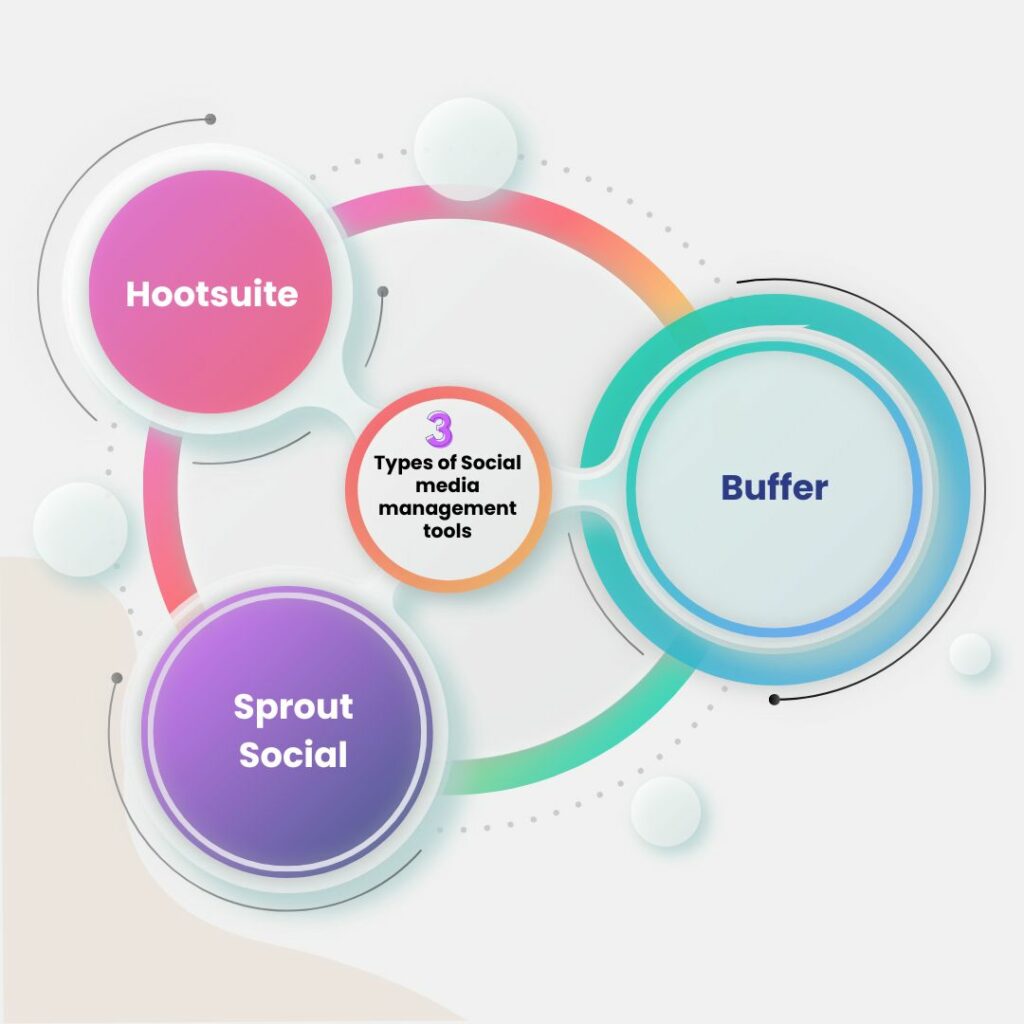
Hootsuite, Buffer, and Sprout Social are social media management tools that assist businesses in overseeing their online presence on different social media platforms.
They let brands keep track of mentions, reply to comments, and understand customer opinions. These tools also help with scheduling and posting content for consistent audience engagement.
By nurturing active social media communities, businesses can motivate customers to share their experiences and support word-of-mouth marketing.
Customer Review and Testimonial Tools:
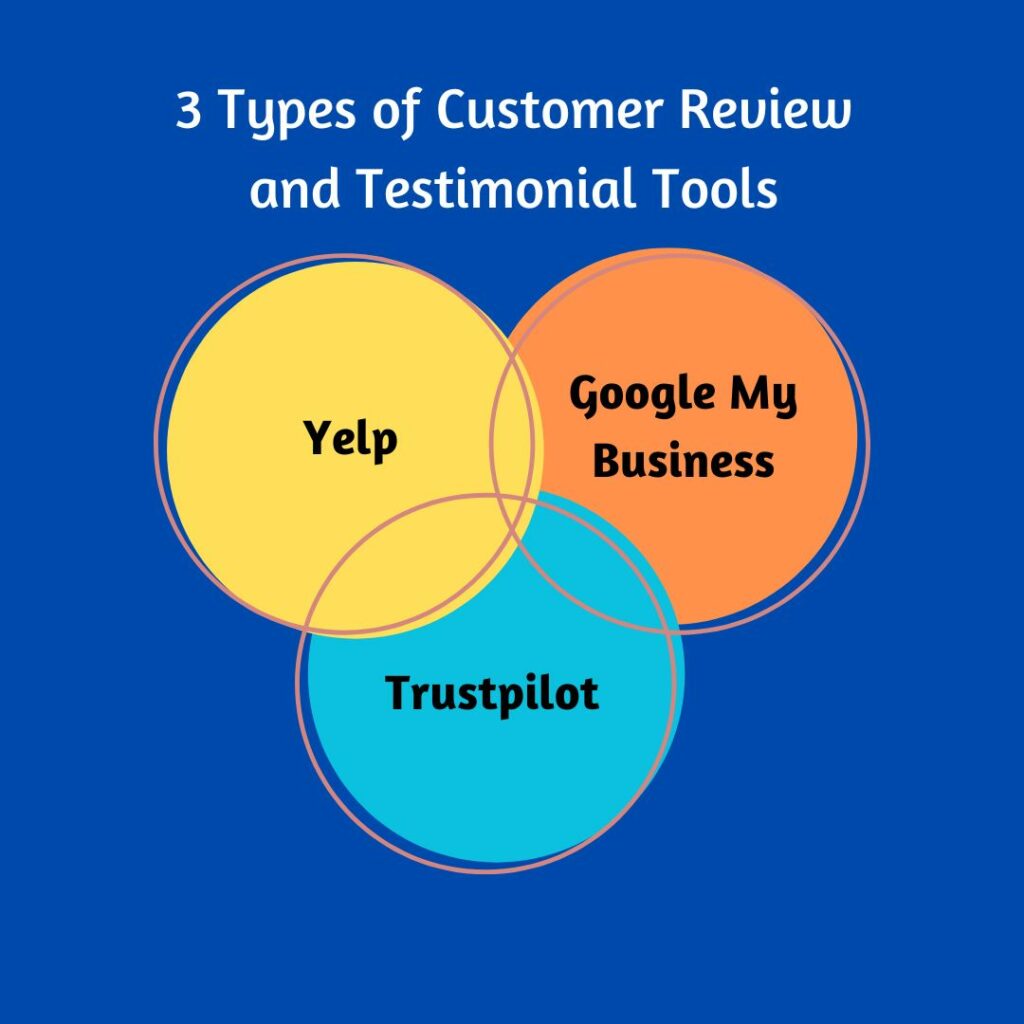
Yelp, Google My Business, and Trustpilot are tools for managing customer reviews and testimonials.
They enable customers to rate and review products or services, offering important social proof for potential customers.
Companies can interact with reviewers, addressing issues and showing appreciation for positive feedback.
By promoting and using customer reviews, businesses can enhance their word-of-mouth marketing and build trust with new customers.
Measuring the Impact of Word-of-Mouth Marketing
Businesses need to measure word-of-mouth marketing to improve their promotional plans.
By looking at important numbers and what customers say, companies can adjust their methods to keep succeeding.
Evaluating these aspects lets businesses make the most of personal suggestions and boost growth. Below are some ways to measure the impact.
- Net Promoter Score (NPS)
- Customer Lifetime Value (CLV)
- Social Media Analytics
- Sentiment Analysis
Net Promoter Score (NPS):
Net Promoter Score (NPS) is a useful measurement for understanding how well word-of-mouth marketing is working.
NPS checks how loyal customers are and if they would suggest a product or service to others. Businesses ask customers to rate how likely they are to recommend the brand on a 0–10 scale, helping them find promoters, passives, and detractors.
The NPS is calculated by taking the percentage of promoters and subtracting the percentage of detractors. A higher NPS shows better word-of-mouth marketing results.
Customer Lifetime Value (CLV):
Customer lifetime value (CLV) shows the total amount of money a business can expect from a customer during their relationship with the brand.
A high CLV often means successful word-of-mouth marketing because happy customers usually buy again and share their good experiences with others.
Watching changes in CLV can help businesses see the long-term effects of their word-of-mouth marketing efforts.
Social Media Analytics (SMA):
Social media analytics gives information about online conversations involving a brand.
Businesses can track things like likes, shares, comments, and mentions to see how well their word-of-mouth marketing strategies are doing.
Looking at the feelings in these conversations helps brands find positive and negative feedback, letting them address problems and make the most of compliments.
Referral and conversion rates:
Referral and conversion rates help businesses see how well their word-of-mouth marketing is working by looking at how many new customers come from referrals and how many of those referrals become paying customers.
High referral and conversion rates mean existing customers are effectively promoting the brand, bringing in new business through word-of-mouth marketing.
Customer Testimonials and Reviews:
Gathering and studying customer testimonials and reviews can show the impact of word-of-mouth marketing.
Positive testimonials and good review ratings mean a strong reputation and happy customers, while many reviews show how much word-of-mouth promotion is happening.
By asking for and responding to customer feedback, businesses can improve their word-of-mouth marketing even more.
Companies That Use Word of Mouth Marketing
Many businesses in a variety of industries have successfully used word-of-mouth marketing (WOMM) to raise brand awareness, cultivate client loyalty, and boost sales.
Here, we go over a few well-known examples of businesses that have successfully used WOMM:
Apple:

As a global leader in technology, Apple has always maintained a solid brand name and loyal customers.
Numerous satisfied clients who actively recommend Apple products to their friends, family, and coworkers are the result of the company’s focus on innovation, design, and user experience.
Launches of new Apple products frequently cause a lot of excitement, which increases WOMM.
Dropbox:

Dropbox, a cloud-based file-sharing and storage service, has credited a successful WOMM approach with a large portion of its early development.
By providing a dependable and easy-to-use service, the business attracted a sizable number of delighted customers who enthusiastically advocated Dropbox to others.
The Dropbox referral program, which provided extra storage space as an incentive, also contributed significantly to the growth of WOMM.
Netflix:

Thanks to its excellent content, user-friendly design, and individualized suggestions, the streaming juggernaut Netflix has experienced significant growth.
These elements have caused happy users to recommend their favorite TV episodes and films to others, naturally promoting the service.
Amazon:

The world’s largest online retailer, Amazon, has made use of WOMM thanks to its first-rate customer support, quick shipping, and wide range of products.
Customers routinely recommend the site to friends and family after having a good time buying, enticing them to do the same.
Lululemon:

Through WOMM, the athletic wear company has amassed a sizable fanbase.
The business has built a following of devoted clients who frequently refer the brand to others by providing high-quality, fashionable, and functional products.
Glossier:

By focusing on premium, cost-effective products and encouraging a sense of community among its fans, the cosmetics business Glossier has successfully harnessed the power of WOMM.
Numerous customers have posted positive comments about Glossier on social media, which has helped the brand gain a lot of traction.
Warby Parker:

By providing fashionable, reasonably priced glasses and a hassle-free home try-on program, the eyewear brand Warby Parker has successfully implemented WOMM.
These elements have produced content for clients who tell their friends and family about the company.
Trader Joe’s:

By providing distinctive, premium goods at reasonable costs, the grocery store chain Trader Joe’s has developed a devoted following on WOMM.
Customers frequently spread the word about their favorite goods and shopping adventures, which increases interest in the company.
Things That Changed with Social Media: Word-of-Mouth Marketing
Social media has had a significant impact on word-of-mouth marketing, expanding its reach and altering how companies and customers interact.
Following are some significant ways social media has changed word-of-mouth marketing:
Improved Reach:
Word-of-mouth marketing previously relied on face-to-face or telephone interactions.
People can now reach a large audience with just one post or tweet to share their recommendations and experiences.
Instant feedback:

On social media, customers can immediately share their brand experiences, ask questions, and provide comments.
This enables firms to quickly respond to issues, resolve issues, and benefit from good feedback.
User-Generated Content:
User-generated content (UGC), such as images, videos, and reviews, has been produced as a result of social media.
UGC is an effective kind of word-of-mouth advertising because it provides authentic, unbiased experiences from actual users, which increases credibility and trust.
Influencer marketing:
Influencers are people with sizable online followings who can sway customer opinion. Social media has given rise to influencers in this regard.
Nowadays, companies work with influencers to advertise their goods and services to a wider audience.
Business advocacy:
Using social media makes it simpler for satisfied consumers to promote a company and tell others about their experiences.
Brand ambassadors aid in boosting word-of-mouth advertising and bringing in new clients.
In-Depth Analytics:
Businesses can assess the effectiveness of their word-of-mouth marketing initiatives using sophisticated analytics tools on social media sites.
These resources aid businesses by providing insights about audience engagement, sentiment, and marketing performance.
Viral Marketing Potential:
Social media makes it possible for content, concepts, or suggestions to quickly spread over the internet. This can quickly draw a huge audience and significantly improve brand visibility.
Challenges of word-of-mouth marketing
Word-of-mouth marketing is an important tool for businesses seeking to promote their products or services.
To be successful with this marketing strategy, businesses must be aware of and work out several problems that are presented.
Then there are some difficulties that businesses have with word-of-mouth advertising.
Lack of control:
Absence of control Negative suggestions can spread rapidly to damage a company’s character because word-of-mouth marketing is generally outside of their control.
Companies must take care to keep an eye on their fame and respond to any negative comments.
Inconsistency:
Because it depends on clients sharing their experiences, word-of-mouth marketing can be inconsistent.
Because of this, it may be challenging to prepare for or manage the effects of word-of-mouth recommendations.
To maximize the possibility of good referrals, businesses must concentrate on giving their consumers positive experiences.
Measurement challenges:
Determining if word-of-mouth marketing is worthwhile investing in depends in part on how delicate it is to quantify the effect of the strategy on deals and profit.
To determine the value of word-of-mouth marketing, businesses must precisely analyze their data and look for changes over time.
Slow to start:
Since word-of-mouth marketing might take some time to gain traction, early results might take a while to manifest.
For businesses to establish a solid base for word-of-mouth marketing, they must be patient and concentrate on giving their clients satisfying experiences.
The danger of inaccuracy:
Word-of-mouth recommendations sometimes contain crimes or misinformation, which, if ignored, might damage the brand’s character.
To guard their character, businesses must be proactive in monitoring and responding to any untrue or inimical reflections.
Case Studies: Successful Word-of-Mouth Marketing Campaigns
Dropbox: Referral Program
Dropbox, the cloud storage service, is an excellent example of a fruitful word-of-mouth marketing campaign.
In the beginning, Dropbox faced challenges in gaining new users affordably. They tackled this by designing a referral program that rewarded both the referring user and the new user with extra free storage.
The referral program was user-friendly and straightforward, enabling users to share their referral links via email and social media.
Consequently, Dropbox saw a 60% rise in sign-ups, with the referral program responsible for 35% of daily sign-ups.
The campaign’s success stemmed from its simplicity, mutual benefits, and smooth integration with social media platforms.
Tesla: Customer Referral Program
In 2015, Tesla, the electric car maker, initiated a customer referral program that generated substantial word-of-mouth marketing.
Tesla owners received rewards like discounts, event invites, and exclusive products for referring new customers who bought a Tesla car.
The referral program allowed Tesla to cut traditional advertising costs while harnessing the enthusiasm of its existing customer base.
The program was highly successful, leading to over 40,000 vehicle sales through referrals and even earning some customers a free car.
Tesla’s referral program showcased word-of-mouth marketing’s power in the luxury car industry.
Apple: Product Design and User Experience
Apple’s word-of-mouth marketing success is due to its emphasis on product design and user experience.
Apple products, such as the iPhone and MacBook, are recognized for their sleek design, user-friendly interfaces, and harmonious ecosystem.
Apple’s devoted customers often act as brand advocates, sharing their positive experiences with others.
This word-of-mouth marketing has been vital for Apple’s growth, as they consistently maintain a high Net Promoter Score (NPS), indicating customers are likely to recommend their products.
Apple’s success in word-of-mouth marketing highlights the importance of investing in product design and user experience, leading to a loyal customer base that willingly promotes the brand.
FAQs:
Word-of-mouth marketing includes the advertising of products or services by utilizing personal endorsements, appraisals, and referrals from satisfied customers. This influential marketing approach is based on the credibility and sincerity of consumers’ interactions.
Word-of-mouth marketing capitalizes on the positive encounters and recommendations of satisfied clients to attract new customers. This can transpire spontaneously during informal chats or be actively fostered by companies through referral strategies, social media initiatives, or user-generated contributions.
Word-of-mouth marketing is indispensable for companies since it establishes trust and dependability.
Personal suggestions from acquaintances, family members, and fellow consumers hold more weight on buying decisions compared to traditional marketing, as they stem from genuine experiences.
Firms can enhance word-of-mouth marketing by offering exceptional products and customer care, developing referral systems, connecting with clients on social platforms, partnering with influencers, and showcasing user-generated content
Enterprises can determine the success of word-of-mouth marketing campaigns by examining factors such as net advocate score (NPS), client continuity value (CLV), social media engagement, referral and conversion rates, and client evaluations and feedback.
Influencers play an essential role in word-of-mouth marketing by using their substantial online following to influence consumer opinions and preferences.
Companies can unite with influencers to showcase their products or services to a larger audience, amplifying their marketing efforts.
Conclusion
To sum up, word-of-mouth marketing is a vital strategy for businesses in our digital world. The strength of this approach comes from genuine personal recommendations, which greatly affect consumer decisions.
Social media has reshaped communication and extended the scope of word-of-mouth marketing. By using user-generated content, working with influencers, and encouraging brand advocates, businesses can effectively capitalize on this marketing technique.
With analytics tools and feedback methods, companies can fine-tune their word-of-mouth marketing campaigns, promoting growth and success.
STACKOFTUTS has the motive to deliver all the techniques and knowledge about Word Mouth Marketing. Businesses must recognize the importance of word-of-mouth marketing, invest in it, and stay competitive while building lasting relationships with their customers.